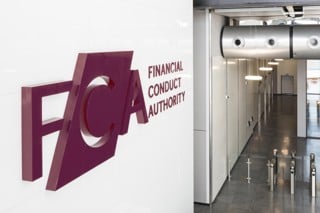Before January 2021, some lenders allowed brokers (the person that arranges the loan, for example, a car dealer) to adjust the interest rates they offered customers for car finance. Typically, the higher the interest rate, the more commission the broker received. This was known as a discretionary commission arrangement.
The Financial Conduct Authority says discretionary commission arrangements created an incentive for brokers to increase how much people were charged for their car loan. It banned this practice in 2021. But there has since been a high number of complaints from customers about how much they were charged before the ban. So now the FCA is assessing the extent of the problem.
Two recent car loan misselling cases heard by the Financial Ombudsman Service (FOS) against Black Horse Motor Finance and Barclays Partner Finance have been mentioned by the FCA as particularly influencing its decision to dive deeper into this issue.
In both, the financial ombudsman deemed the customers had not been treated fairly because there was a discretionary commission agreement between the finance company and the dealer/broker and the customer was not aware of this.
In neither instance was FOS particularly critical of the dealer/broker, and it didn't name them in its rulings.
Mrs Y vs Black Horse
In 2016, Mrs Y sought to buy a £7,619 used car from a dealership, a regulated broker, which introduced her to Black Horse which arranged a hire purchase agreement for the full amount at 10.5% APR. The total charge for credit was £2,096.47.
The 'flat interest rate' was 5.5%. The FOS report states Black Horse was prepared to lend to Mrs Y at a flat interest rate of between 2.49% and 5.5% with any amount charged above 2.49% going to the broker in commission. The broker selected the highest flat interest rate within the permitted range, of 5.5%.
In total Black Horse paid the broker £1,299.05 as a direct consequence of arranging the hire-purchase agreement, consisting of £1,148.67 of commission under a DCA and £152.38 'support payment' to the dealers head office, equivalent of 2% of the credit amount.
 The ombudsman said although the dealership disclosed that lenders 'may' pay it fees for introductions, it did not disclose that Black Horse 'would' pay it nor provide any further information on the commission model in use, which the ombudsman found meant it failed to appropriately disclose the existence of commission and it failed to manage the conflict between its interests and the interests of Mrs Y (Principles 7 and 8)
The ombudsman said although the dealership disclosed that lenders 'may' pay it fees for introductions, it did not disclose that Black Horse 'would' pay it nor provide any further information on the commission model in use, which the ombudsman found meant it failed to appropriately disclose the existence of commission and it failed to manage the conflict between its interests and the interests of Mrs Y (Principles 7 and 8)
"If Mrs Y had been told about the structure of the commission arrangements (and in particular the discretionary commission arrangement), she would not have entered the hire-purchase agreement on the terms she did. Mrs Y would not have been prepared to pay the Broker such a significant amount for introducing it to Black Horse (which was the effect of the discretionary commission arrangement and the direct link to her payments), particularly given that the broker already stood to receive £152.38 under the support payment," said the ombudsman.
It said: "Black Horse’s commission model not only delegated the power to set the rate to the broker, but it also created an inherent conflict between the interests of Mrs Y and the interests of the broker by linking the amount of commission the broker would receive to the interest Mrs Y would pay on her agreement, thereby incentivising the broker not to reduce the interest rate. This meant that the higher Mrs Y’s interest rate was set, up to a maximum of 5.5%, the more commission the broker would receive."
The ombudsman ordered Black Horse to compensate Mrs Y by paying her the difference between the payments she made at the 5.5% flat interest rate and the payments she would have made were the finance arrangement set up at its lowest - and zero discretionary commission paying - rate of 2.49% flat rate, plus interest on each overpayment at 8% per year.
Miss L vs Barclays Partner Finance
In November 2018 Miss L took out a conditional sale agreement with Barclays Partner Finance at a dealership to buy a £19,133 car, borrowing £13,333 at a 4.67% flat interest rate and 8.9% APR. The total charge for credit was £3,113, entirely made up of interest.
The dealership, as broker, received £1,326.60 in discretionary commission from Barclays PF, plus a second payment of £266.66, or 2% of the credit amount, was paid by Barclays PF to the dealer group's head office.
The ombudsman heard that Barclays PF was prepared to lend to Miss L at a flat interest rate of between 2.68% and 15.25%, with any amount charged above the 2.68% minimum going to the broker as commission.
A flat interest rate of 4.67% was selected by the dealership/broker, and although it disclosed that lenders typically paid it a fee for introductions it did not disclose that Barclays would pay it nor provide any information about the context by which it would be paid commission.
The ombudsman pointed out that Barclays' agreement with the broker provided for "differential commission rates" and as such, Barclays PF should have entered into the arrangement where the payments were justified by extra work. "The discretionary commission arranegement in this case was not linked to the amount of work carried on by the broker," said the ombudsman's ruling.
 "By introducing and operating the discretionary commission arrangement with the Broker on the terms it did, Barclays PF acted contrary to the guidance at CONC 4.5.2G and failed to have due regard to Miss L’s interests and treat her fairly as required by Principle 6," it added.
"By introducing and operating the discretionary commission arrangement with the Broker on the terms it did, Barclays PF acted contrary to the guidance at CONC 4.5.2G and failed to have due regard to Miss L’s interests and treat her fairly as required by Principle 6," it added.
It said that Miss L, had she known about the discretionary commission arrangements, would not have been prepared to pay the dealer such a significant amount for the introduction to Barclays PF particuolarly that the dealer would already earn the £266 payment to head office.
To address this "unfair relationship", the ombudsman has ordered Barclays PF to pay Miss L the difference between the payments she made to the agreement at the flat interest rate set by the broker and the payments she would have paid if the agreement had been set up at the lowest, zero discretionary commission paying, flat interest rate of 2.68%. In addition, Barclays PF was told to reduce the remaining monthly payments to reflect what they would have been had her contract been at 2.68% flat rate, not 4.67%.
























Login to comment
Comments
No comments have been made yet.